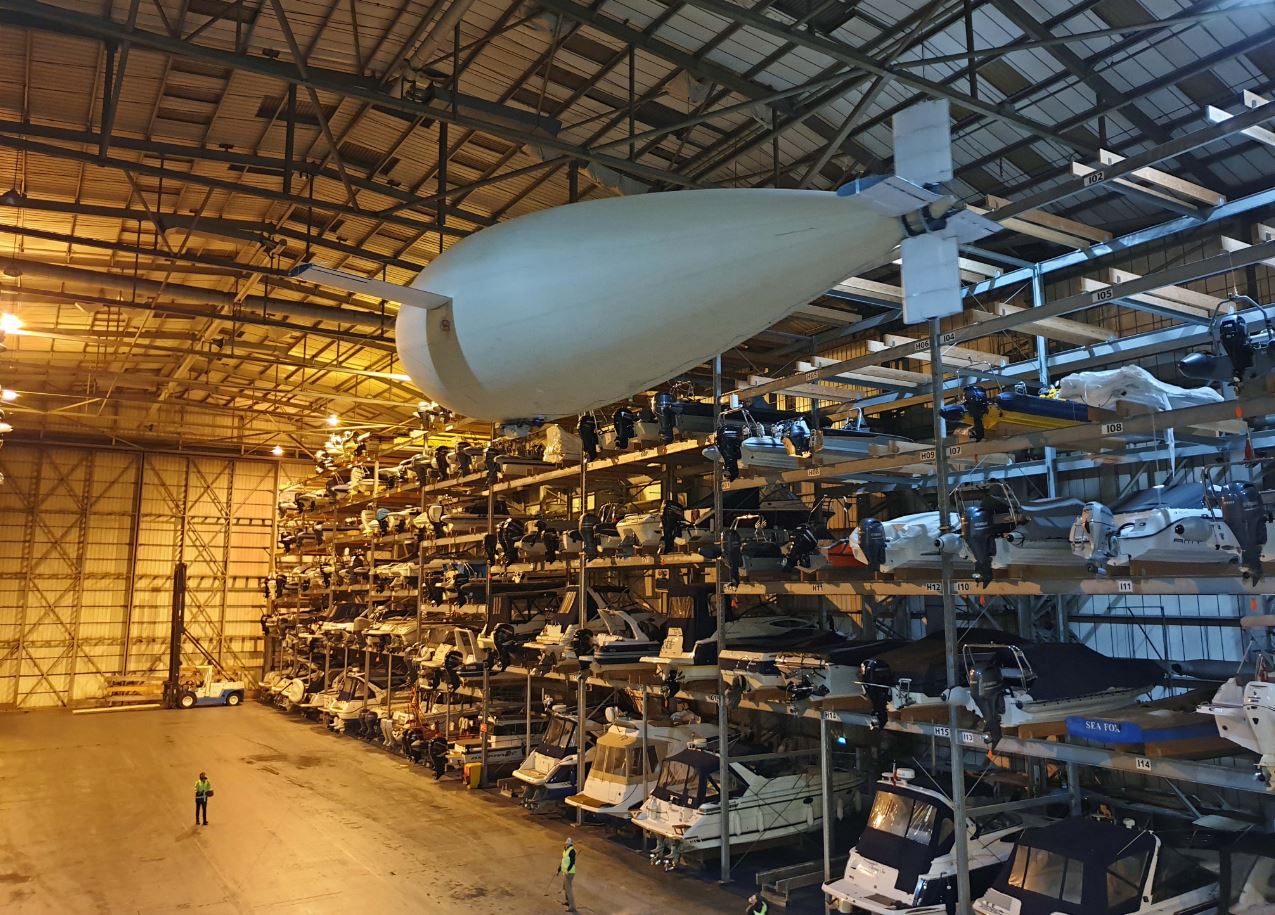Innovative new aircraft designed to fly indefinitely
24 April, 2019
3 min read
By joining our newsletter, you agree to our Privacy Policy


It’s an aircraft designed to stay aloft indefinitely using solar power and helium and one that could be a cheaper alternative to telecommunications satellites.
Meet the Phoenix, the first unmanned aerial vehicle of its size to use variable buoyancy to ascend and descend effortlessly and designed to be totally self-sufficient at altitudes as high as 70,000ft.
AT 15m (50ft) long, it weighs just 120kg and a prototype was already been flown in indoor trials in Portsmouth in the UK.
READ our coverage of the Boeing 737 MAX saga
Variable buoyancy is also used in underwater drones and in this case, balances the buoyant helium against compressed air pumped in from outside the aircraft.
Air is also expelled from a vent at the back of the aircraft to propel it forward.
Although the Phoneix looks like an airship, it comes with wings covered with solar panels that generate electricity. This gives it a wingspan of 10.5m.
“The Phoenix spends half its time as a heavier-than-air aeroplane, the other as a lighter-than-air balloon,'' says University of the Highlands and Islands engineering professor Andrew Rae, who led the aircraft’s designs
"The repeated transition between these states provides the sole source of propulsion.
“The vehicle’s fuselage contains helium to allow it to ascend and also contains an air bag which inhales and compresses air to enable the craft to descend. This motion propels the aeroplane forwards and is assisted by the release of the compressed air through a rear vent.
“The energy needed to power its pumps and valves is provided by a battery, which is charged by lightweight flexible solar cells on its wings and tail.''
The ultra-long-range endurance aircraft is being developed by a consortium that includes industry representatives and other universities in Bristol, Newcastle, Sheffield and Southampton.
It is cheaper to build and operate than conventional drones and uses include the release of micro-satellites and surveillance
Rae says it could also be used as a “pseudo-satellite” doing the same job as a satellite in the high atmosphere at a fraction of the cost.
“Current equivalent aeroplanes are very complex and very expensive,'' he says. "By contrast, Phoenix is almost expendable and so provides a user with previously unavailable options.”
The Phoenix team is now exploring collaborations with major manufacturers to take the technology to the next phase.
Get the latest news and updates straight to your inbox
No spam, no hassle, no fuss, just airline news direct to you.
By joining our newsletter, you agree to our Privacy Policy
Find us on social media
Comments
No comments yet, be the first to write one.

